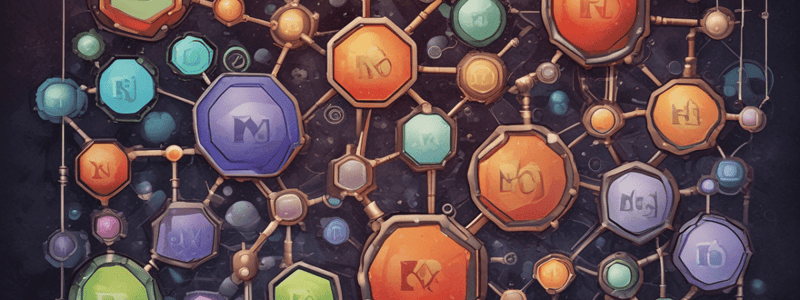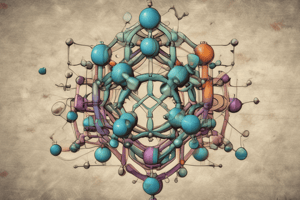Podcast
Questions and Answers
What is the oxidation number of an uncombined element?
What is the oxidation number of an uncombined element?
- +1
- Variable
- 0 (correct)
- -1
What is the sum of oxidation numbers in a molecule?
What is the sum of oxidation numbers in a molecule?
- Depends on the molecule
- Zero (correct)
- Non-zero
- Variable
What is the oxidation number of oxygen in peroxides?
What is the oxidation number of oxygen in peroxides?
- +2
- +1
- -1 (correct)
- -2
What is the oxidation number of Group 1 elements in compounds?
What is the oxidation number of Group 1 elements in compounds?
What is the oxidation number of copper in its compounds?
What is the oxidation number of copper in its compounds?
What is the oxidation number of iron in its compounds?
What is the oxidation number of iron in its compounds?
What is the oxidation number of manganese in its compounds?
What is the oxidation number of manganese in its compounds?
What is the oxidation number of chromium in its compounds?
What is the oxidation number of chromium in its compounds?
What is the oxidation number of oxygen when bonded to fluorine?
What is the oxidation number of oxygen when bonded to fluorine?
What is the oxidation number of an ion of an element?
What is the oxidation number of an ion of an element?
Flashcards are hidden until you start studying
Study Notes
Oxidation Numbers
- The oxidation number is the charge an atom appears to have when electrons are distributed according to certain rules.
- Uncombined elements have an oxidation number of zero.
Rules for Assigning Oxidation Numbers
- The sum of oxidation numbers in a molecule is zero.
- The oxidation number of an ion of an element is the same as its charge.
- The sum of the oxidation numbers of all atoms in a complex ion equals the charge on that ion.
Oxidation Numbers of Specific Elements
- Hydrogen has an oxidation number of +1 when bonded.
- Oxygen has an oxidation number of -2, except in peroxides where it's -1, and when bonded to fluorine, it's +2.
- Group 1 elements have an oxidation number of +1 in compounds.
- Group 2 elements have an oxidation number of +2 in compounds.
- Halogens have an oxidation number of -1 when bonded to a less electronegative atom.
Transition Metal Oxidation States
- Chromium: +2, +3, +6
- Manganese: +2, +3, +4, +6, +7
- Iron: +2, +3, +6
- Copper: +1, +2
Studying That Suits You
Use AI to generate personalized quizzes and flashcards to suit your learning preferences.




